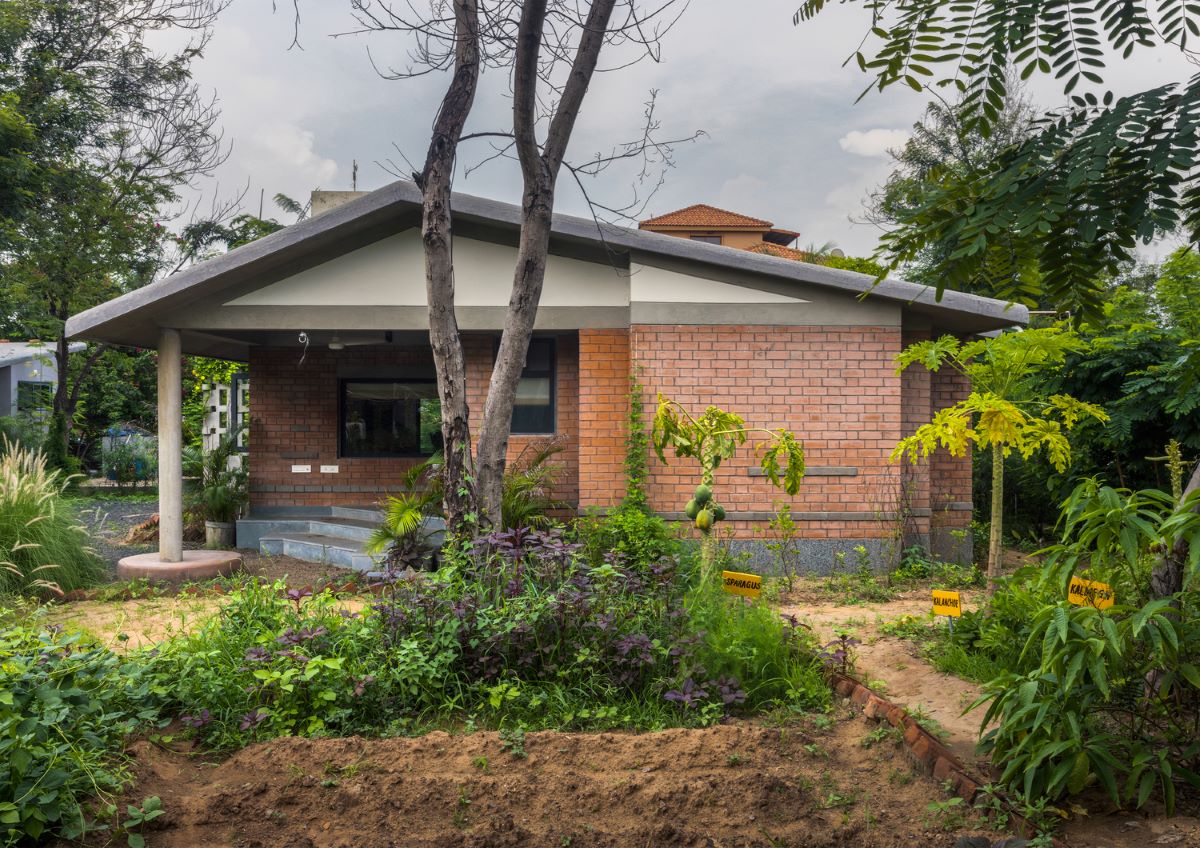
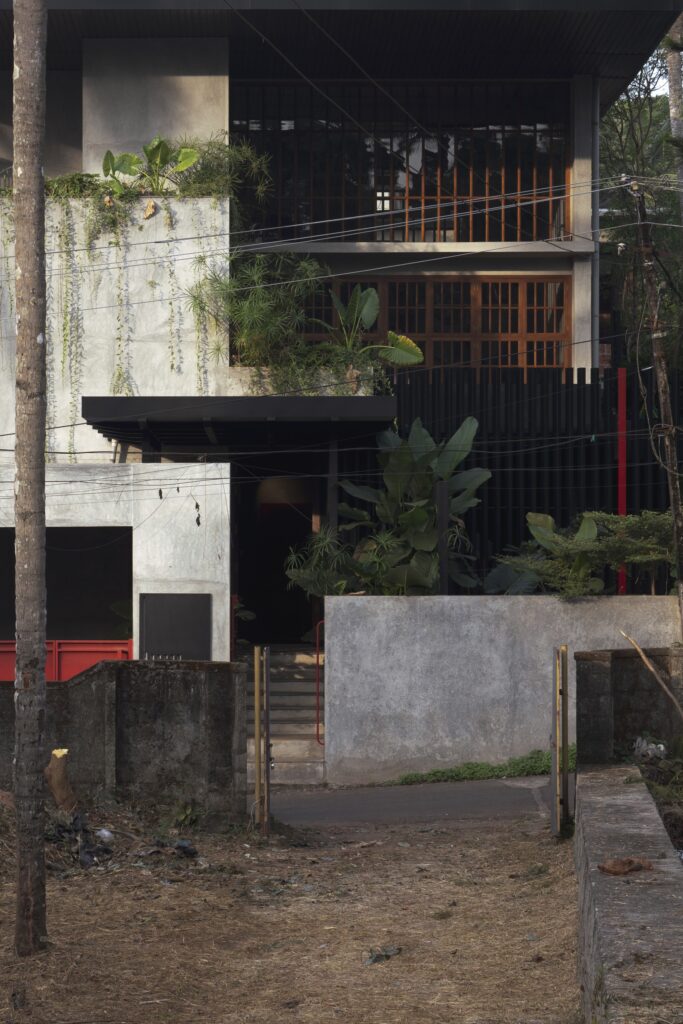
In the bustling city of Calicut, where the rhythm of life moves at an unremitting pace, there stands a home, a testament to the harmonious union of disparate elements. A sophisticated urban abode characterised by minimalist aesthetics, it embraces a stripped-down material palette. Guided by sustainable planning principles, it (Hassan House) seamlessly melds modern elegance with conscious living.
The residence pays homage to the client’s roots in Kayalpattinam (Tamilnadu), a coastal Muslim settlement with a deep-seated heritage of business acumen. Drawing inspiration from the client’s ancestral connections, the design celebrates the essence of family togetherness. In crafting this dwelling, the focus lies on fostering a sense of community within, reflecting the family’s desire to live as a cohesive unit.
The architectural language elegantly encapsulates their preference for collective interactions while carefully maintaining a veil of privacy from the outside world. The spatial arrangement ensures that moments of familial intimacy are cherished, creating a sanctuary that encapsulates the warmth of a home.

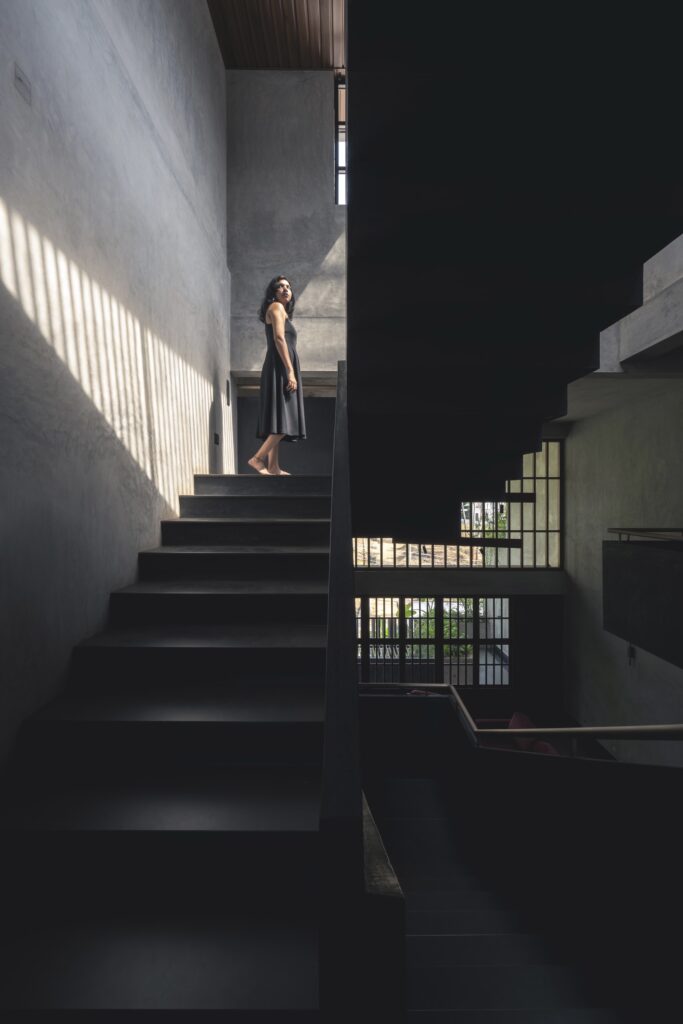
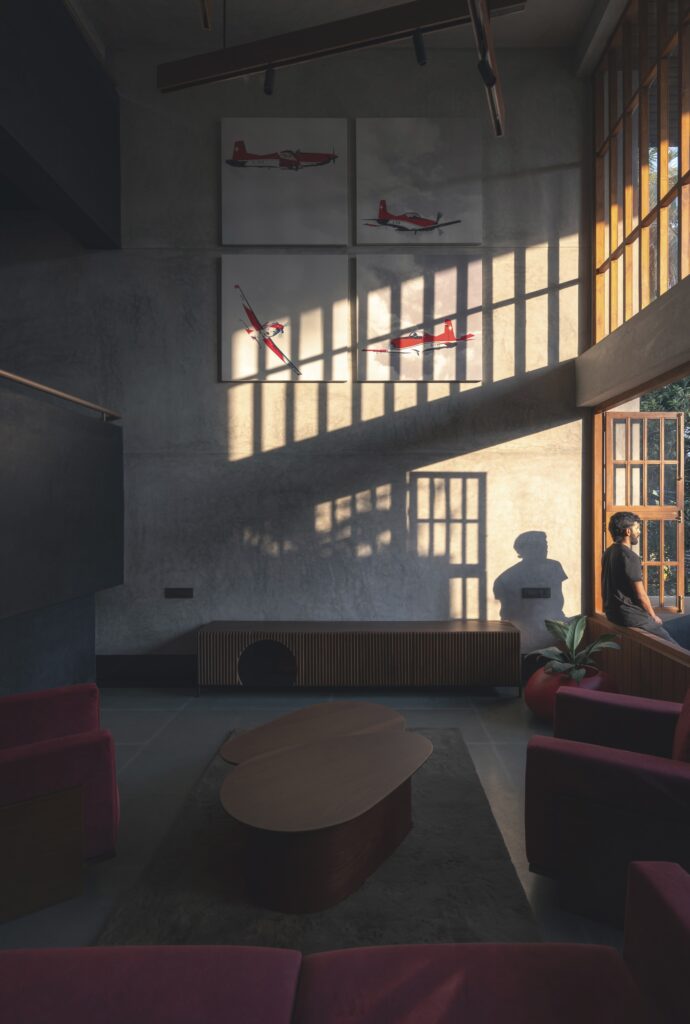

The strategic placement considers the terraced landscape, forging connections with neighbouring family homes. The spatial organisation not only speaks to the Kerala tradition of the courtyard but also elevates it, transforming the very essence of the house from an embracing structure to one that unfolds into the surrounding landscape.
A nod to Kerala’s architectural heritage, the courtyard emerges as the nucleus of this contemporary dwelling. It serves as a bridge between spaces, facilitating not only connectivity but also a ventilation pattern that mimics the wisdom of traditional design. Evolving from an embracing structure, the house transforms into an open sanctuary, seamlessly integrating with its surroundings and within itself.


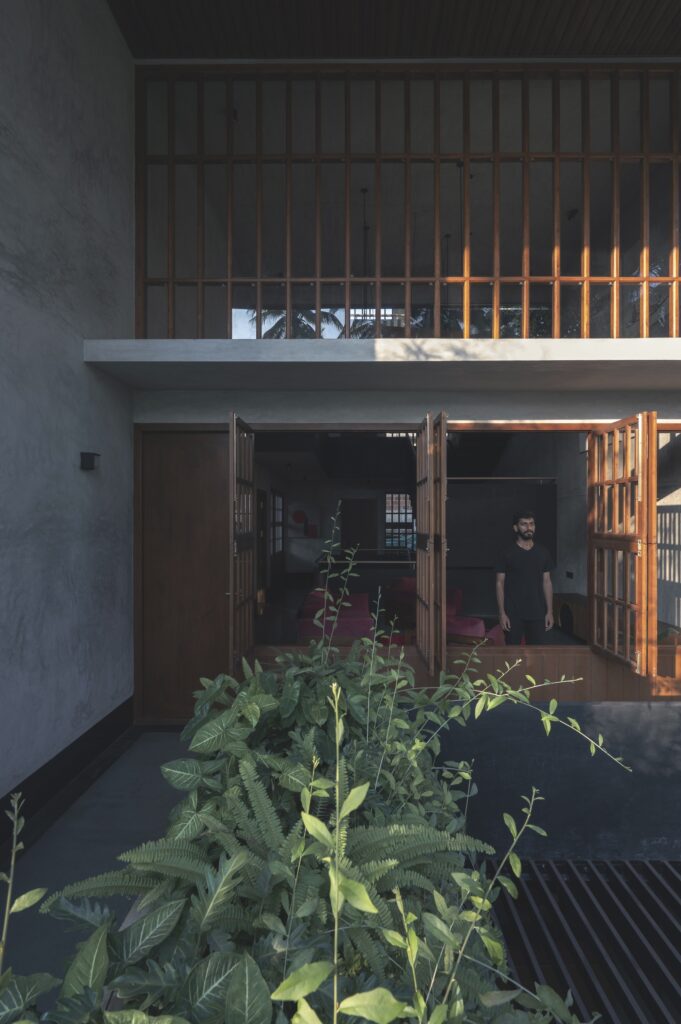
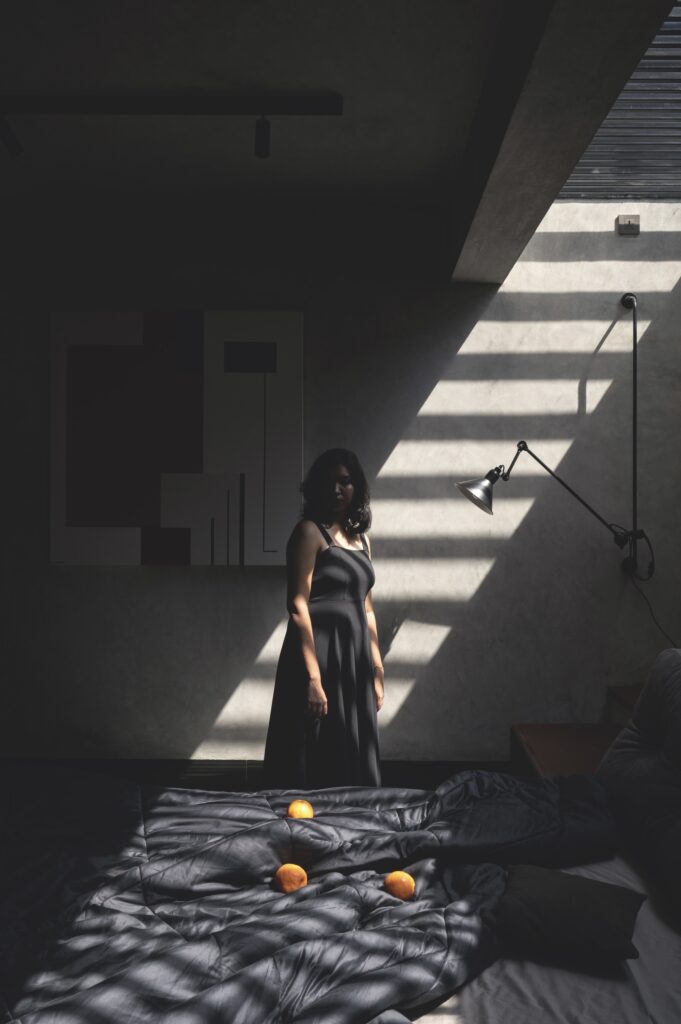
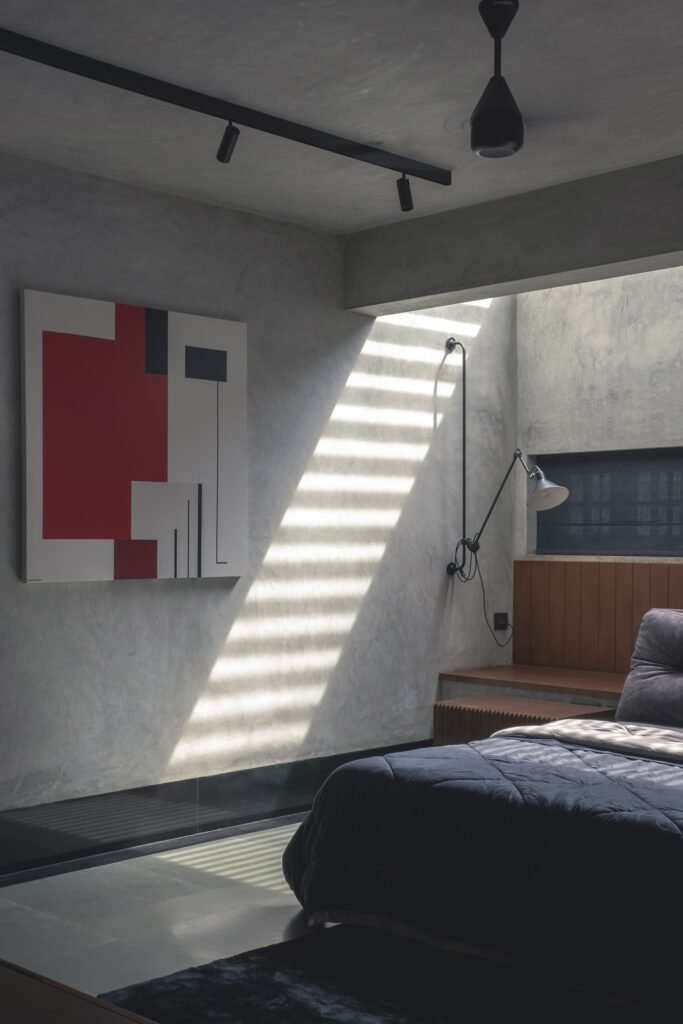
The materials employed echo this balance, with a deliberate minimalism that extends from the exterior to the interior. Subtle splashes of red punctuate the neutral palette, adding warmth and breaking the monotony with a nod to the family’s vibrant traditions. Beyond aesthetics, the architectural finesse lies in thoughtful sustainability — a design that breathes with proper ventilation and strategically positioned shades, diminishing the reliance on air conditioning and material minimalism. Wall finishes are achieved with zero paint usage throughout.
A minimalist ethos governs the material palette and spatial arrangement, fostering simplicity and elegance. The marriage of Kota stone on floors and black and grey oxide-infused cement plaster on walls creates a timeless theme, while the structural finesse of basic steel supports additional elements. In the subtle play of light, the residence reveals its second defining feature—a deliberate layering that orchestrates the interplay of light and material.
The interlocking elements—finely crafted wooden screens, glass walls framed in wood, and oxide-infused cement plaster walls—create an ethereal dance with light. Smooth as human skin, yet crackled like stretched rice paper, the walls metamorphose, embracing the transient drama of a canvas that engages with light in a symphony of tones. This home stands not just as a dwelling but as a narrative, a harmonious blend of heritage and modernity, where family bonds find solace in the artistry of architecture.


Project Drawings:

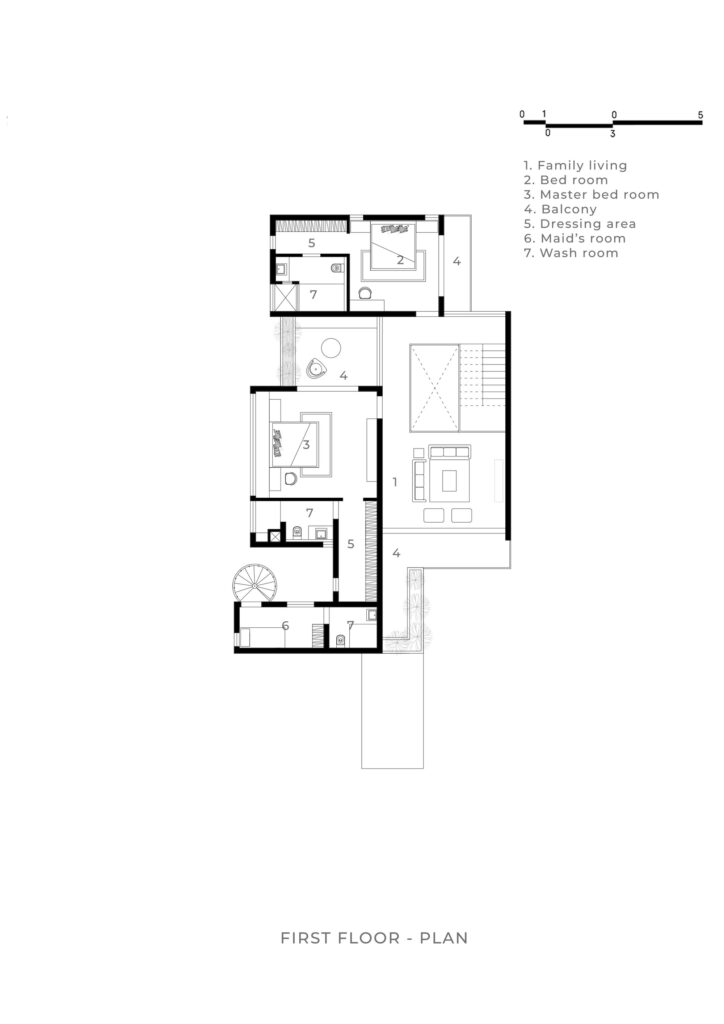



Project Details:
Name: Hassan House
Location: Calicut, Kozhikode, Kerala
Status: Built (2023)
Area: 4850 sq. ft.
Design Firm: Monsoon Projects
Team: Shabin S Shajahan, Adarsh Rajendran
Photographs: Studio IKSHA
Description: Monsoon Projects

